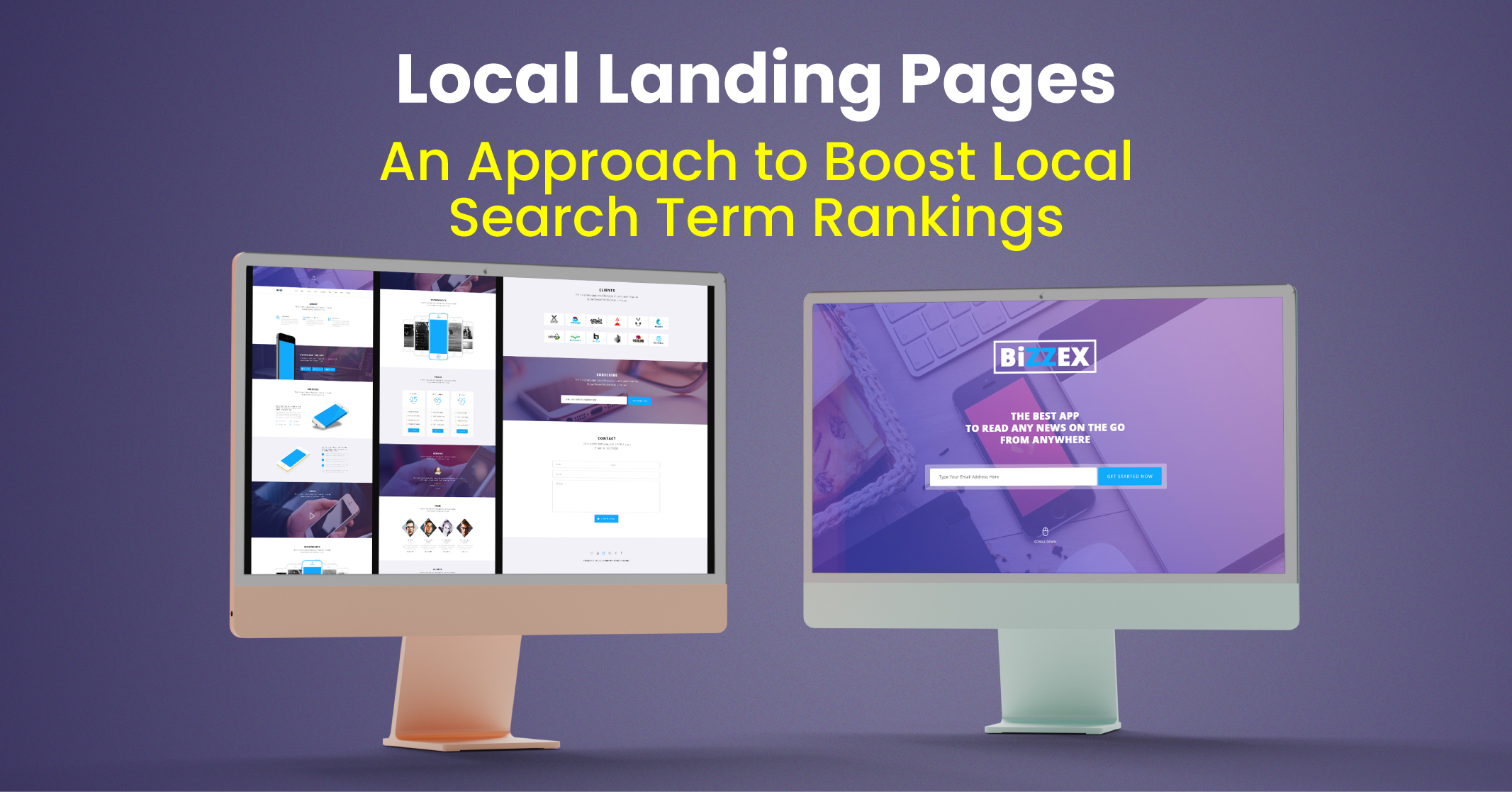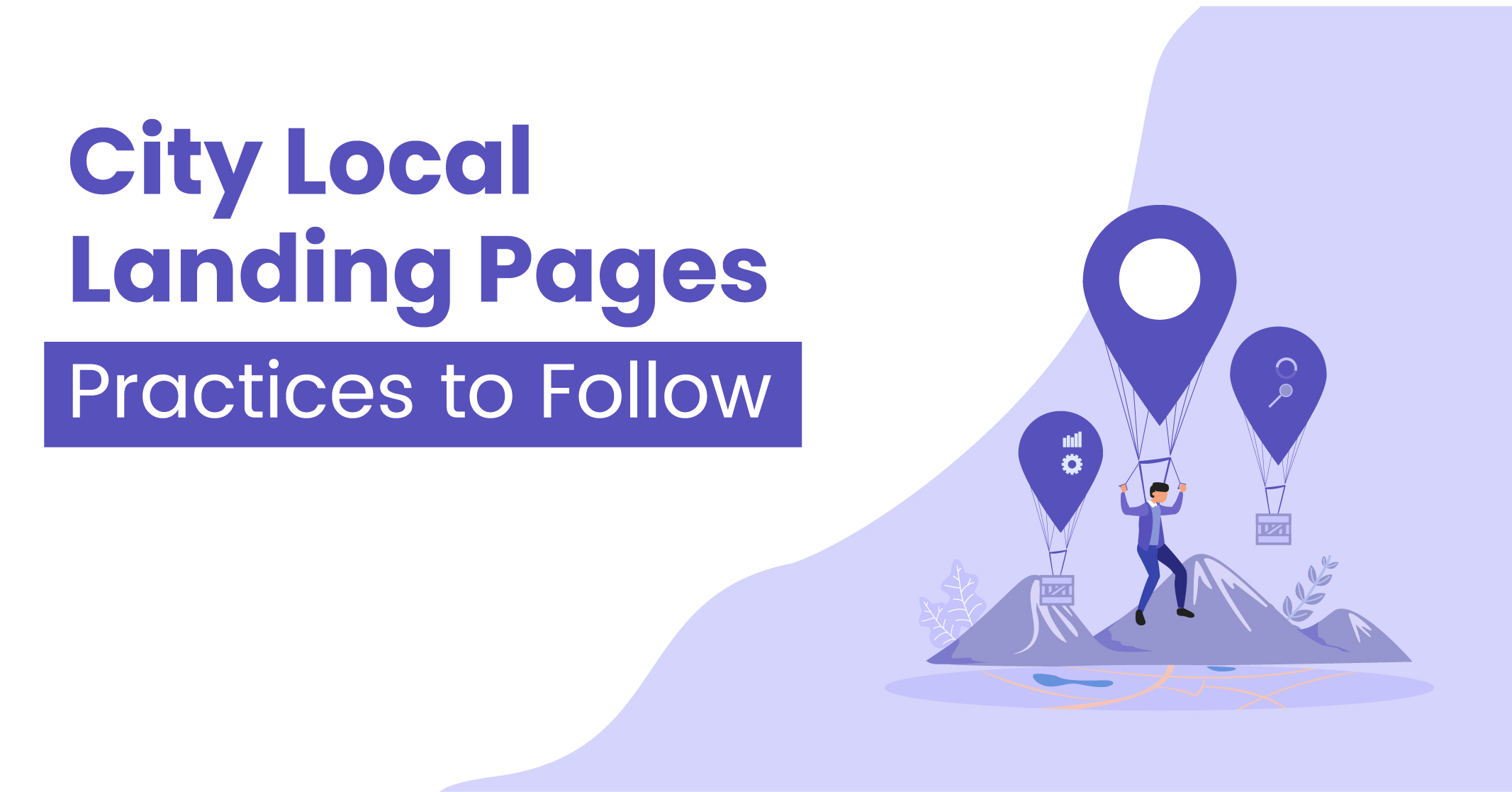I hope you enjoy reading this blog post.
If you want to get more traffic, Contact Us

Click Here - Free 30-Minute Strategy Session
Be quick! FREE spots are almost gone for this Month. Free Quote

Location landing pages often don’t receive the recognition they deserve. Many businesses simply provide basic information such as their name, address, phone number and hours. Some may even include a Google Map for directions.
The copy on these pages often goes unnoticed, and if there are multiple locations, the same content is duplicated with only the location name changed. Does it seem like that’s all a potential customer would want from a location page, right? Or perhaps an appointment scheduler?

Click Here – Free 30-Minute Strategy Session
Be quick! FREE spots are almost gone for this Month
But let’s take a moment to shift our focus from ourselves to the customer. After all, isn’t their satisfaction our top priority? While it’s true that Google plays a significant role, we must not overlook the needs and expectations of our actual customers.
So, what exactly does Google seek in a location page? Let’s start with the fundamentals.
Learn More: Google Maps Marketing
Despite their straightforward nature, location pages hold significant importance in terms of SEO for brands.
There are two primary types of search queries for which these pages are specifically designed:
Brand Queries: These queries are crucial in terms of appearing on Google search results. When users search for terms like “[Brand Name],” “[Brand Name] near me,” or “[Brand Name] Pleasanton,” Google aims to display a location page for that brand.
If you don’t have a dedicated page for the specific location, Google might show your homepage, a relevant City Page or even a page from a third-party directory that utilises your brand name along with the location for SEO purposes. Additionally, queries like “Brand Name hours” or “Brand Name address” are commonly associated with brand queries.
Non-Brand Local Queries: These queries present a valuable opportunity to attract potential customers who may not be familiar with your brand or have considered you for that specific query. Examples include searches like “pizza,” “pizza near me,” or “best pizza in Pleasanton.”
While single-location businesses can often rank for these queries using their homepage, multi-location businesses typically require a dedicated location page to rank for these high-value queries in the organic search results.
Additionally, location pages serve as a prime source of external links for your website, aside from the homepage. Local business directories often link to these pages, referred to as “local citations” and over time, they accumulate backlinks from local media sites and other sources.
By understanding the significance of location pages for SEO, brands can optimise their online presence, attract relevant traffic and enhance their visibility in search engine results.
Learn More: What are Local Citations?
The influence of location pages on local pack rankings is quite straightforward. If you have a Google Business Profile (GBP), linking it to a dedicated location page targeting the desired area becomes a crucial ranking factor for Local Packs.
Through various tests conducted, we have observed that changing the link to a page that doesn’t specifically target the city we aim to rank in negatively impacts the Local Pack rankings. However, once we switch it back to a location page tailored for the targeted area, the rankings tend to recover.
What To Do?
It’s important to consider that your homepage may carry more location relevance than the specific location page for a given area. Hence, it’s advisable to test and determine which page performs better for your GBP. Additionally, having a page dedicated to a particular service area can also contribute to ranking for queries related to those specific service areas.
By understanding the impact of location pages on local pack rankings and strategically optimising them, you can improve your visibility in local search results and increase the chances of attracting potential customers in your target areas.
Learn More: Why Local SEO Is Important?

A high-converting landing page must contain the following components:
NAP (Name, Address, Phone Number)
Include your business’s name, address, phone number and operating hours on the location page. Ensure that the information matches the details listed on your Google Business Profile (GBP). Consistency in NAP information is beneficial for local directory sites, with exact matches often outperforming partial or non-matching listings.
Utilise Local Business schema to mark up all NAP elements. Depending on your specific business category, you may find more targeted schemas that align with your industry.
If you have multiple related brands, consider using the Organisation schema to provide clarity for search engines. Additionally, incorporate Breadcrumb schema to create breadcrumbs linking to parent City/State URLs.
Targeted Meta Data
Optimise the title tag and H1 heading of the local landing pages to target the business name and location. For example, “Starbucks Pleasanton, CA.” You can experiment with additional targeting variations, such as “Starbucks Coffee in Pleasanton, CA” or “Starbucks Coffee Near Pleasanton, CA.”
Research suggests that for “near me” searches, the city holds significant importance in the title tag, followed by the state. Including the word “near” can also have a marginally positive impact on click-through rates.
The concept of “engagement” in SEO encompasses several subjective factors. When optimising a location page, it’s important to consider additional elements that can enhance its usefulness for potential customers.
Including clear calls-to-action (CTAs) on the location, page can provide a positive signal to Google regarding its usefulness. CTAs such as online appointment booking, online ordering options or other interactive features can contribute to a more engaging user experience and potentially improve the overall performance of the location page.

Implementing advanced SEO tactics for location pages doesn’t have to be overly complicated.
Here are some proven strategies that have yielded positive results over time:
Optimised Copy: Start with a basic copy block that describes your business and its offerings. Use a find and replace function to customise the landing page copy for each location by inserting the specific location name or city. This initial approach is cost-effective and easy to implement. Monitor the results before investing more time and resources into further copy enhancements.
What To Do?
However, it’s worth noting that we’ve observed instances where unique and targeted copy outperformed using the same copy across all pages. For.
Incorporate relevant phrases and points of interest (POIs) into your copy. If applicable to your business, consider including phrases that are commonly used in searches related to your target topic. For instance, if you’re in the hotel industry, adding phrases like “near the airport” can make your location pages more relevant to users seeking accommodations in proximity to airports.
What To Do?
By mentioning specific points of interest and neighbourhoods you serve, you can improve the overall relevance of your location pages and signal to search engines your association with specific cities or regions.
In summary, leveraging optimised and unique copy, along with the inclusion of relevant phrases and points of interest, can enhance the effectiveness of your location pages and improve their visibility in search engine rankings.
For multi-location businesses, it is beneficial to include links to nearby locations on their location pages. The specific distance between locations can be determined based on what is most convenient for customers.
Here are two reasons why linking to nearby locations is advantageous:
By linking to nearby locations and incorporating relevant location names within the copy, multi-location businesses can improve their online presence and provide search engines with valuable signals of location relevance and get more organic traffic.
Learn More: How to Increase Organic Traffic?
Including topically relevant images and videos on location, pages can have a positive impact on their rankings and overall performance. While location pages are often overlooked and launched with only textual content, the addition of visual elements can make a difference.
Here’s why:
By incorporating topically relevant images and videos, location pages can become more engaging, visually appealing and competitive in search rankings. It is essential to align the visuals with your business niche and optimise them for search engines’ understanding using tools like the Google Vision API.

When it comes to location pages, there are a few practices you should avoid. After years of experimentation, here are a couple of things to be cautious about:
Unnecessary Location + Service Pages: Some brands create separate location pages for specific services or departments, linked off the main location detail page. While there may be valid reasons for having these pages, such as providing specific information for customers seeking a particular service in their city, it’s important to note that these pages often don’t generate significant new organic traffic.
Our analysis of organic traffic data suggests that approximately 90% of the traffic to these pages is already brand-related, meaning it may cannibalise existing searches rather than attract new visitors. Keep this in mind when considering whether to invest resources in creating these pages.
Local Department Service Pages: It’s worth mentioning that local department service pages may not always contribute positively to organic traffic. While they can be beneficial for improving conversions and providing targeted information, they may not result in significant organic traffic gains.
Moreover, introducing a large number of “thin” URLs to your site could potentially have negative SEO effects. It’s essential to weigh the pros and cons and consider the specific context of your business before implementing such pages.
Remember, these guidelines may not apply universally, and there can be exceptions based on your industry and goals. As a rule of thumb, if a department or service has its own Google Business Profile (GBP), creating a local page for SEO purposes may be worth considering.
However, it’s crucial to evaluate the potential impact on organic traffic and consider the overall SEO implications before implementing these pages.
Creating location landing pages for cities where you have no physical presence can be a tempting strategy but it often doesn’t yield positive results. We recently encountered a retailer site that took this approach, generating pages for numerous cities near their actual locations.
However, since they had no physical stores in those cities, the pages simply linked to nearby locations instead of providing specific NAP (name, address, phone number) information.
Despite having over 130,000 of these location pages, the site received almost zero organic traffic. This is because Google tends to prioritise showing physical location pages for queries that imply searchers are looking for a specific place.
For service-area businesses (SABs), creating such pages becomes necessary to rank in areas beyond their physical locations. However, for queries indicating a search for a physical location, Google tends to disregard these types of no-location pages.
Instead, it’s advisable to focus on optimising location pages for your actual physical locations and ensuring they provide accurate and valuable information to users.
SEO landing pages play a crucial role in local search engine optimisation. By optimising these pages effectively, businesses can improve their online visibility, attract local customers and boost organic traffic.
Key elements of a well-optimised local landing page include:
It is important to create location pages only when there is clear local intent, ensuring that they provide valuable information to potential customers searching for local businesses or services. Additionally, avoiding unnecessary location and service pages, as well as pages without actual locations, can help maintain a focused and effective SEO strategy.
You can also have a look at a few SEO landing page examples to identify the key requirements and formulate a strategy.

LEAVE A REPLY